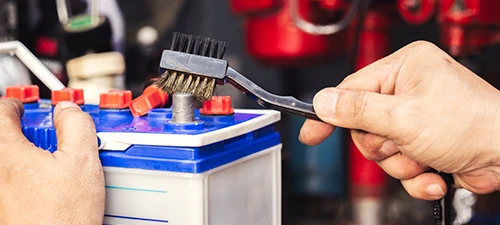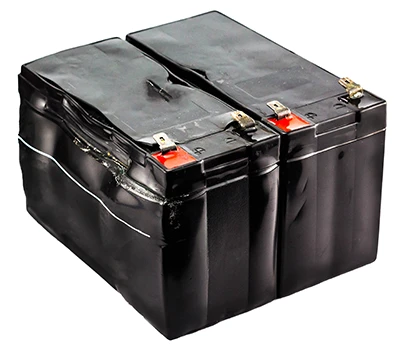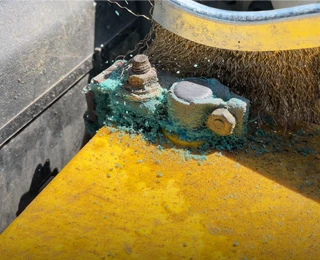How to Clean Corrosion from Your Car Battery Terminals
The battery in your car is a vital piece of equipment. Anytime the terminals on that battery are covered in a crusty white or blue substance known as corrosion, it can make starting your gas-powered car or turning on your EV impossible without jumper cables. That corrosion can even drain your battery. Here’s how to spot corrosion and what to do if you find any on your car battery.
Please Note: Battery corrosion is caustic and can irritate or burn skin and eyes. Wear safety glasses, gloves, and cover any exposed skin before attempting to remove corrosion from your car battery or terminals. Additionally, battery corrosion left on an epoxy garage floor can cause damage over time. Clean any corrosive materials from your vehicle and floor after cleaning a battery and terminals. Or skip the possible issues and come to Les Schwab. We have the tools and expertise to clean your battery and get you back on the road.
How to Remove Corrosion
Corrosion is caused when hydrogen gas reacts with other chemicals inside the casing, which creates a liquid that leaks from the posts on the battery. That corrosion then spreads to the terminals which can limit their contact with your battery, causing starting and stalling issues. If left unchecked, corrosion can ruin your terminals and cables. It can also drain your battery.
While there are several reasons a car battery might keep dying, corrosion is one of the leading causes. Before removing corrosion from your battery, learn how an auto battery works.
Items You’ll Need
To remove that corrosion, you’ll need a few items.
- Eye protection
- Rubber gloves
- Water
- Baking soda
- An old toothbrush
- Clean rag
Les Schwab Tip: If you don’t have water and baking soda handy, cola or coffee can be used in an emergency. However, don’t use alternative cleaners if the location where your battery sits is designed to contain liquids as the fluid will pool, possibly mold, and cause a mess.

Step 1: Be sure the vehicle is turned off and the hood is open. If the engine is still warm, wait a few minutes to allow it to cool.
Step 2: Create your cleaner. While you wait, add some water and baking soda to a plastic cup and create a paste. The mixture should be one part baking soda to three parts water.
Step 3: Remove the battery cables. If there is any corrosion on the terminals, you’ll need to clean those along with the posts on the battery.
Step 4: Give your battery a quick inspection. If you notice any leaks, or if the battery is swollen, don’t clean it. A bloated or leaking battery can be dangerous. Instead get to Les Schwab so we can take a look and make recommendations.

Step 5: Start scrubbing. Using a stiff-bristle brush (an old toothbrush works great) and your water/baking soda paste, start to scrub the corrosion from the battery and terminals. A small chemical reaction tells you it’s working. Just be careful not to get any of the baking soda/water mixture on other parts of your engine or vehicle.
Step 6: Rinse and wipe it clean. With fresh water and a cloth, wipe away the loose corrosion. Allow to air dry before re-installing the cables.
Causes & Signs of Battery Corrosions
Escaping Gas: High temperatures can force some fluid out of the vents on your battery in the form of a gas. That gas then reacts with the lead and other metals on the battery nodes (+ and – terminals), causing corrosion.
Overcharging: There is a possibility of overcharging a battery when using an external battery charger that uses the wrong voltage for your battery, if your alternator fails, or if the voltage regulator is damaged. When this happens, the battery can swell, causing fluid to escape. Once that liquid touches metal outside the battery, corrosion will occur.
Age is a factor: Even the best battery won’t last forever. As your battery gets older, corrosion will be more common as gasses and liquids escape.
What Are Signs Your Battery Needs A Cleaning?
At first, corrosion is nothing more than a flaky, white substance on your battery and cables. As long as it doesn’t expand, you might not notice any problems. But as that corrosion worsens, it can cause some serious issues, including:
- Stalling while driving
- Trouble starting
- Dim headlights
- Power steering malfunctions
- Ignition clicking and not starting
- Check engine light comes on
- Unsafe battery
Time for a New Battery? Stop by Your Local Les Schwab
Les Schwab has been installing and maintaining batteries for decades. Stop by and our pros will use the latest testing equipment to determine your battery’s health, and charge it for free if needed. If you need a new battery, we have one of the biggest selections around, along with free installation and anti-corrosion maintenance.

